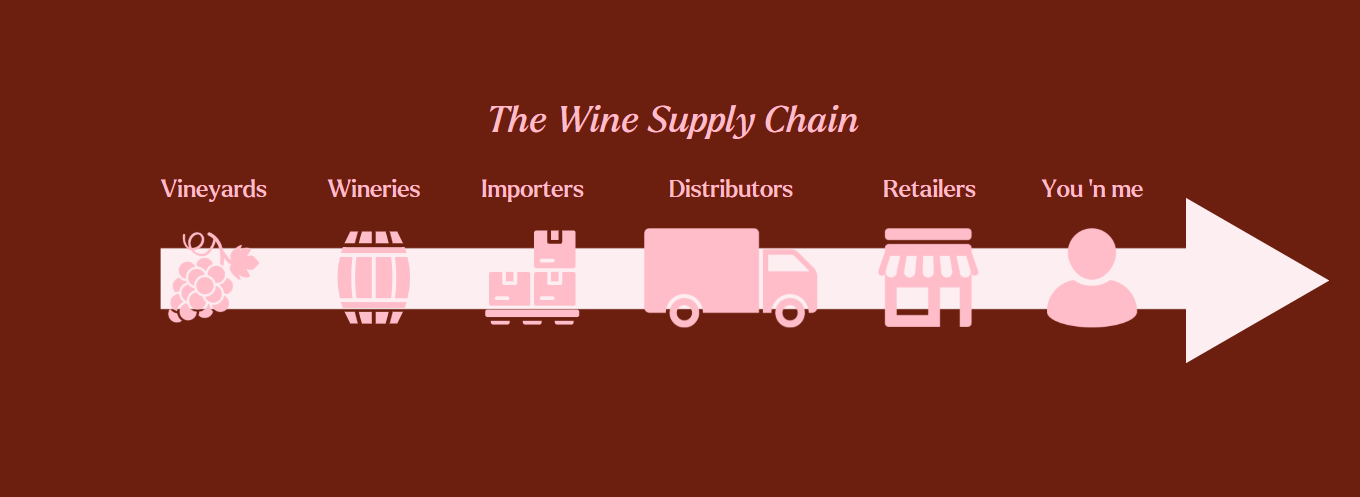cloudy with a chance of sediment: a natural wine manifesto
a not-so-brief FYI, critique, and defense of the current state of natural wine through a ride-along with the people making, importing, and selling it.
This excerpt has been adapted from a post originally released on June 16, 2024.
Buckle up cowboys, today we're gonna talk about natural wine. There is no shortage of internet warriors (myself included) screaming explanations of what natural wine is into the void, so let’s say that this one is specifically from the perspective of my lovely hosts here in Bugey, Tailleurs-Cueilleurs (TC). It’s also got a fair bit of business editorializing tossed in by yours truly but hey that’s what you’re here for anyway.
Natural wine, the intro
If you have spent any amount of time in a wine bar, wine store, or a trendy restaurant these days, you have seen (or even had) a ‘natural wine’. The hazy liquid, brightly-colored bottles topped with a crown-cap or sealed up with wax and covered in labels adorned with artful scribbles of vineyard critters or some random French exclamation like “Jolie!” are an easy draw on the eye while being delivered to the table next to you. Cracking them open and finishing the whole bottle, however, is often a much more difficult task than admiring.
In what feels like the last few years, natural wine has exploded in popularity, but the actual movement is much older. The modern natural wine movement is commonly attributed to a group of Beaujolais winemakers dubbed the ‘Gang of Four’ by wine importer Kermit Lynch. Inspired by French chemist Jules Chauvet’s research on the over-use of sulphur additives in the region’s winemaking, the Gang of Four (and others in the Beaujolais region, just a few dozen kilometers to the west of of where I am in Bugey) sought out to conquer the difficult challenge of avoiding herbicide use and chemical additives to make a sustainably farmed, low-intervention wine.
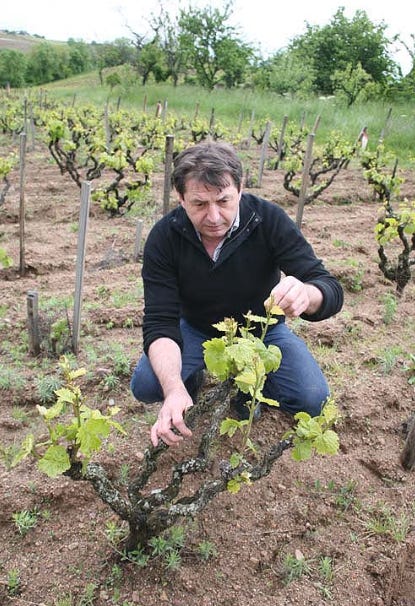


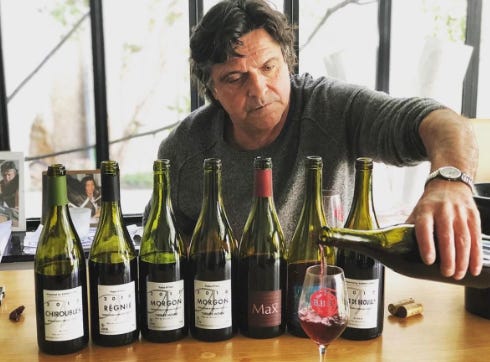
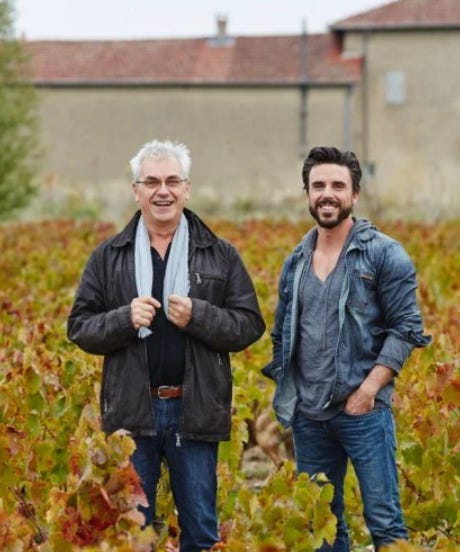
In the late 2000s, wine importer Kermit Lynch popularized the Gang of Four as a marketing term to sell their wines in the states (they never called themselves this… imagine if they did…). Since then, the natural wine category has seen rapid growth, and the number of producers switching away from conventional methods to producing natural wines has grown exponentially. At the same time, chugging down a bottle of funky, slightly fizzy, potentially flawed wine has become an unfortunately common occurrence as the quality of natural wine has failed to keep up with the quantity.
[Disclaimer: If you have bought me a bottle of very natty wine in the past few years and wondered if I liked it… I plead the fifth]
What exactly counts as natural wine?
The term ‘natural wine’ is as much a mirage of marketing mastery as it is a genuine demand for greener practices. In other words, anyone can put ‘natural wine’ on their bottles with absolutely no restriction due to a complete lack of standardization in worldwide liquor labeling laws around the term, but this does not make the people, sentiment, and impact behind the movement any less real.
French law, which, in cases of doubt, becomes the default for the wine world, regulates the terms ‘biodynamic’ and ‘organic’, but the term ‘natural’ is not regulated. Legislated terms correspond to a measurable quantity of sulfites per liter as well as a winemaking process certified every five years.
Currently, legal standards dictate that still dry white and rosé wines can have up to 200mg of sulfites per liter, while their red counterparts can have up to 150mg. White and rosé wines labeled 'organic' must have <150mg, and organic reds must be under 100mg. ‘Biodynamic’ wines must be under 90mg for whites and rosés and under 70mg for reds.
Wines labeled 'natural' are not technically regulated, but well-meaning winemakers and producers usually aim for <30,g of sulfites, which allows use of the term ‘vin nature’. The last unregulated level is what they make here at TC — 'vin-zéro', which indicates that there are zero grams of added sulfites in their wine. 'Added' is an important distinction here because, although it is still a debated point, it's generally accepted that some level of sulfites in wine exists as part of the natural fermentation process, even as much as 5-10mg.
If you got all that, hats off to you. I’m still wrapping my head around it.
Now the dirty truth — because ‘natural wine’ is as much a dubious marketing term as it is a legislated wine label option, many of the wines you are already drinking are natural wines, they just don’t say it. The better the quality of the producer, the more likely they are to be already sustainably farming, limiting sulfur additives, and labeling the wine without any mention of ‘natural’. And because it’s an unrestricted term, many of the wines you do see labeled as ‘natural’ are simply trying to take advantage of the buzz in the category to sell flawed or low quality wine, making it especially difficult for the average consumer to make an informed and intentional choice about their purchase.
What’s wrong with natural wine today?
This current state and future of natural wine, which has struggled in recent years, was a hot topic of discussion at dinner about a week and a half ago when TC’s importer to Japan, Ryu, visited for a night of sushi and (accidentally) 10 bottles of wine consumed by 5 people (whoops).
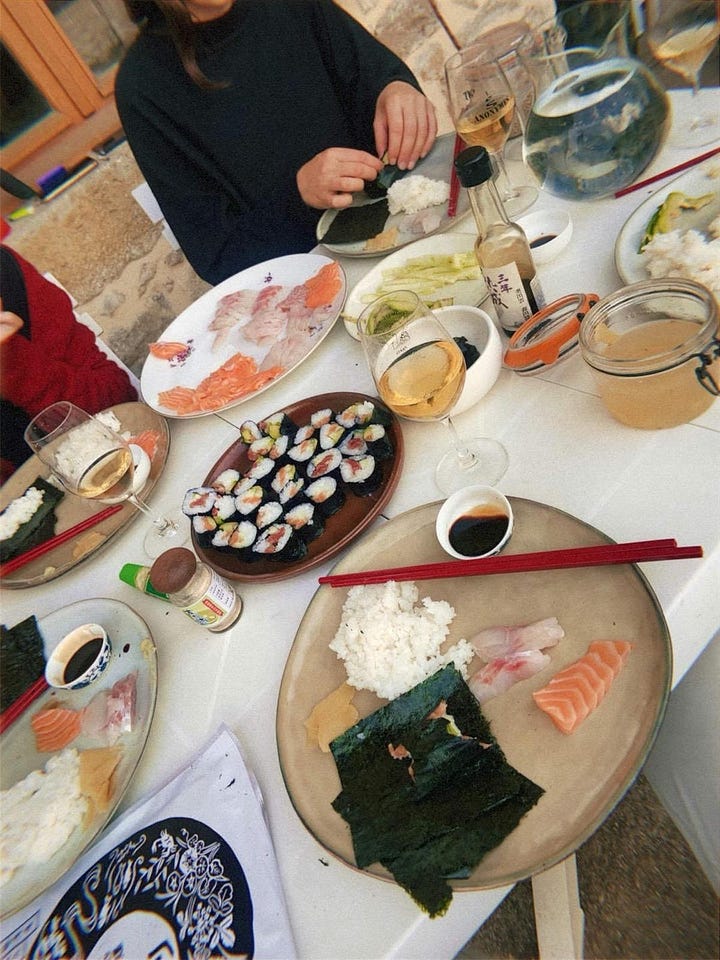

The main question remains — can consumers be convinced to drink more natural wine? Current perspectives are varied — there is a small subset for whom natural wine will always be their choice, just on plain old convictions. There is a larger contingent that won't drink natural no matter what because it tastes too different or they had a bad experience (booo try new things). But the most important group is arguably the vast majority of people, who will probably drink both natural and conventional wine, and just need the right option in front of them at the right price. And because wine labeling is so inconsistent and the quality of wines branded as ‘natural’ can vary so much, they may not have enough information to make that choice on their own.
This is where people like my new friend Ryu come in.
Let’s say you go into a store specifically looking for the bottle of Merlot with a duck on it, or the chicken rosé. As much as you may praise your decision-making abilities, I regret to inform you that there are so many levels in between you and your choice of bottle that the concept of ‘free will’ barely exists in your wine purchase.
Before you pick up this wine at the store, the winemaker has often made a carefully calculated decision to plant, cultivate, and design a wine in a specific style that she believes will sell. The importers and distributors have chosen to push a specific producer based on their knowledge of the winemaking region and their own preferences. And the retail store owner’s has decided to stock a certain wine because he knows what his regulars tend to buy and what he can sell to people that wander into the store in his area.
At every step in the process, there needs to be an intentional choice to prioritize sustainable and low-intervention practices. Producers need to see the demand among consumers, but importers and distributors need to make a concerted effort to increase their purchasing of high-quality, exceptional examples of natural wine to really grow its popularity beyond the niche, pretentious, hipster fad that it is right now (no hate, myself included). This is essentially the answer we got to over 10 bottles of wine with Ryu - to which he very flatteringly said something to the effect of 'that's why I work with you guys'. Classic schmoozer.
Final thoughts
Walking through the vines of TC and their neighbors here in Bugey it is so clear to see the difference between the dead, chemically treated soil of a conventional winery and the alive, teeming soil of a natural winery. There is undoubtedly an underlying difference in how well-made natural wines are constructed that creates lively, refreshing wines with something truly new to say. But in the current state of regulation, it can’t be left up to the end consumer to make the decision when the wine industry has all the information. If the wine industry really wants natural wine to flourish (and we should), then all it really requires is a healthy amount of filtering through the sediment that’s out there.





